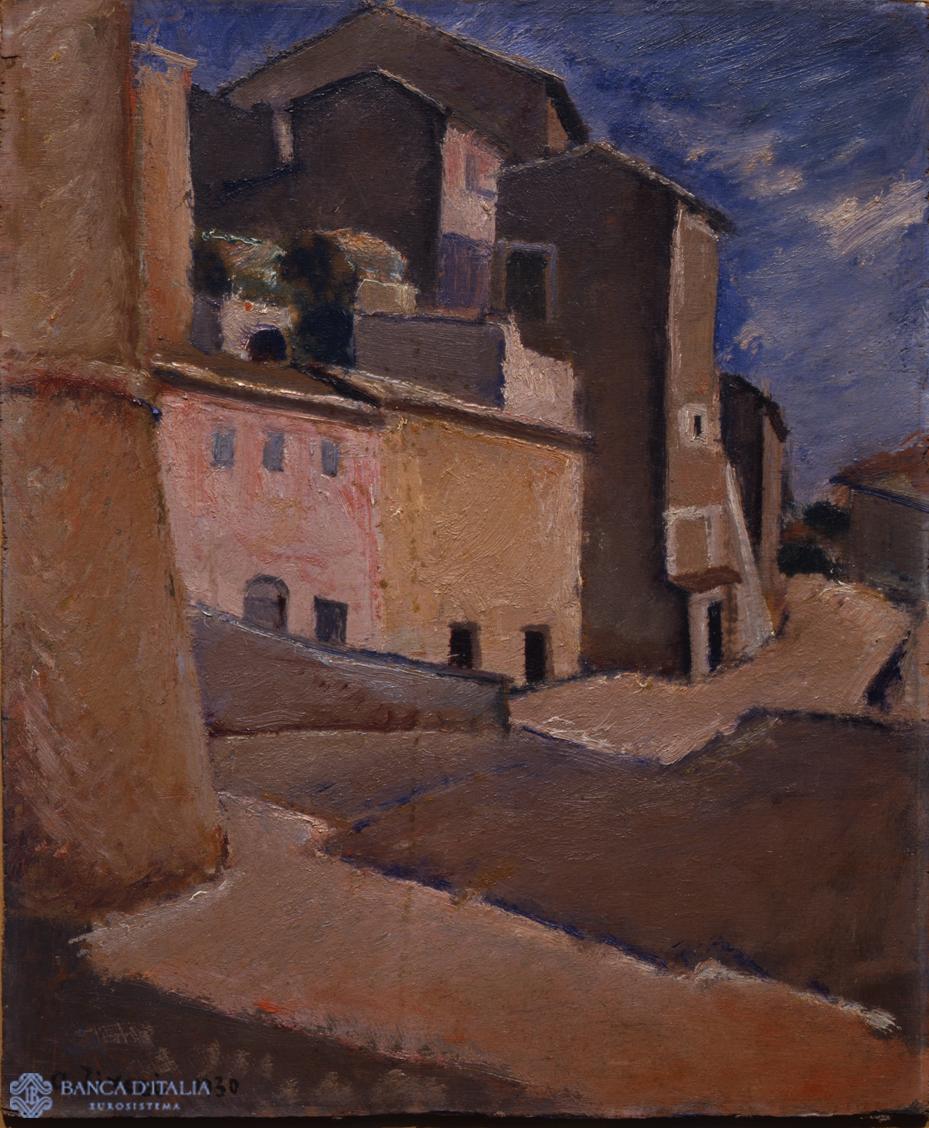The picture shows a view of a mediaeval town, a typical subject of Roman painting between the two wars, from Trombadori to Francalancia and Ziveri too. The fragment of the town appears in the left-hand part of the painting, starting from a close-up blocked by an enormous buttress. This is the starting point of the perspective of the houses, which in the background are agglomerated around more imposing buildings. It is as if the dominant rose tonality, in contrast with the blues and whites of the sky and with the dark parts of the terrain, were grafted onto a compositional structure of clearly Cézannesque derivation.
The picture was painted in 1930, therefore when Ziveri was twenty-two, but already shows some essential characteristics of his mature art. Tonalism has already been inflected in ways that, while they link Ziveri to the Roman School, nonetheless distinguish him for the solidity of his setting and a corposity that in the future always distinguish Ziveri’s formal language from that of Mafai, where instead forms tend to break up into light.
Alberto Ziveri, Veduta di Vallerano
Veduta di Vallerano
20th century AD
Painting
Landscape

Artist
Date
1930
Material and technique
Oil on board
Measurements
38 x 32 cm
Compiler
Antonio Del Guercio
